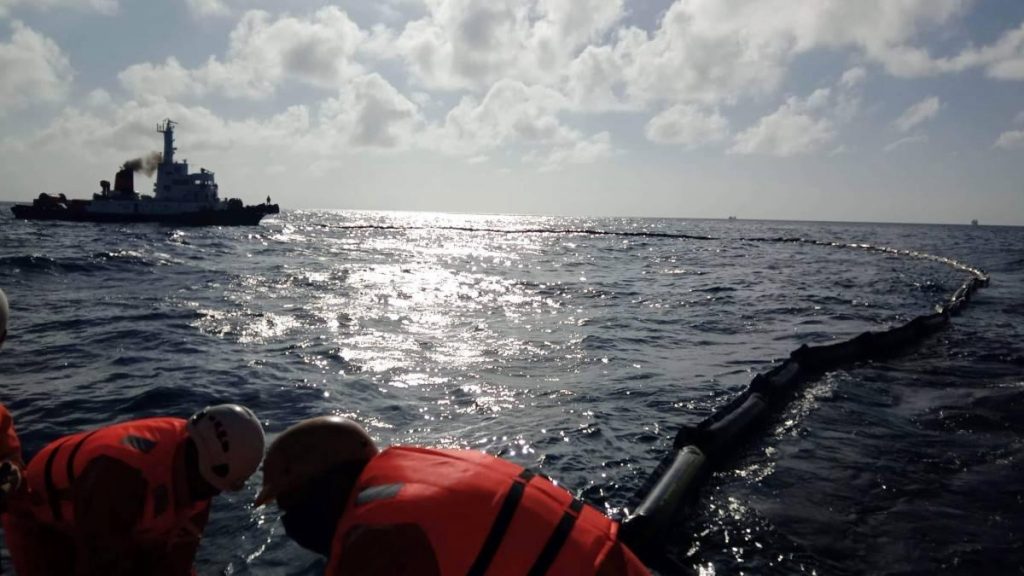Philippine Coast Guard races to contain massive oil spill after MT Terra Nova capsizes

The Philippine Coast Guard has deployed floating barriers and initiated an oil spill cleanup operation to prevent contamination from reaching Manila.
Authorities are urgently addressing the oil spill from the 65-meter-long MT Terra Nova, which capsized on Thursday amid heavy monsoon rains affecting large parts of the country.
Officials noted that the leak seems to be emanating from the ship’s engine rather than its cargo tank, which contained nearly 1.5 million liters of industrial fuel.
Concerns are rising that this spill, already spanning several kilometers, could become the worst in the nation’s history if not contained.
Coast guard videos show personnel using buckets to siphon oil from the affected waters. “We are preparing for the worst,” stated Rear Admiral Armand Balilo, the coast guard spokesman.
The spill threatens the local fishing industry and marine life in an area frequented by fishermen. “We are talking about industrial fuel here… It will definitely affect the marine environment and could even reach us here in Manila,” added Rear Adm Balilo.
Hernando Bacosa, an environmental sciences expert at Mindanao State University, told the BBC that the quantity of oil on the MT Terra Nova justifies issuing the highest oil spill alert in the country.
“Manila Bay, home to the Port of Manila, is the biggest port in the Philippines and the center of trade and economic activity. This could potentially paralyze the capital and surrounding areas,” he said.
Rear Adm Balilo estimated that draining the oil from the ship, which capsized in waters about 34 meters (111 feet) deep, could take a week based on initial assessments.
However, Bacosa mentioned that the relatively shallow depth might facilitate the oil siphoning process.
He compared this incident to a previous oil tanker sinking off the coast of another Philippine province, where cleanup was more challenging due to the depth of nearly 400 meters (1,312 feet).
The MT Princess Empress, which sank last year, had been carrying 800,000 liters of industrial fuel oil, resulting in extensive black sludge on the beaches.
Monsoon rains, exacerbated by Typhoon Gaemi, delayed the coast guard’s response and caused widespread flooding across Metro Manila and its suburbs.

However, the storm has since weakened as the typhoon moved over Taiwan’s mountainous region and landed in Fujian, southeastern China.
The MT Terra Nova was one of two ships that sank in the region during the typhoon, with the second sinking near Taiwan’s southwestern coast.
The Terra Nova was en route to Iloilo in central Philippines with 17 crew members on board. One person died, but 16 were rescued. Authorities are investigating the role of bad weather in the incident.
The Philippine-flagged MT Terra Nova was found compliant with regulations for traveling in heavy weather. It was moving towards Iloilo at a speed of 0.1 nautical miles per hour, according to tracking provider VesselFinder.
Rear Adm Balilo stated that no storm warnings were issued when the ship departed. The crew had secured the ship’s doors before abandoning it. “They felt that the waves were really strong.
The captain decided to return to shore, but it was difficult because they were sailing against the waves. They said the ship scooped up water until it eventually capsized,” Rear Adm Balilo explained.
Advocacy group Oceana has urged the Philippine government to assess the environmental impact of the oil spill, calling for accountability from government agencies and the tanker’s private owners for failing to prevent the disaster.
Source-BBC




